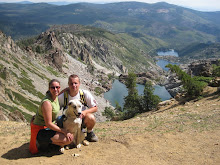
The National Assembly of Afghanistan has an upper house (House of Elders “Mesherano”) and the lower house (House of the People “Wolesi Jirga”). The House of Elders has 102 members, with each province having at least 2 members, and serves more of an advisory role rather than that of law making. The House of the People bears the greater burden of law making and consists of 249 delegates. In each House, there are considerations made for women, disabled, impaired and Kurchis nomad delegates.
Now that there is some general understanding of the country, Dani went on a trip to the province of Bamyan. Bamyan is number 15 on this map, the middle of the country. (We live at Kabul, number 22 on the map). Bamyan has the only female governor in Afghanistan with a majority of the population being Hazaras. In addition to the natural beauty Bamyan is known for, it is recognized as one of the safest provinces in the country which has allowed for greater focus on civil rebuilding.
Currently, Bamyan is the operations base for the New Zealand peace keeping force called a Provincial Reconstruction Team (PRT). To date the Kiwi’s (New Zealander’s) have helped with reconstruction work including building bridges and schools as well as maintaining security in the region. The New Zealand Police are also working in the region to help train the Afghan National Police (ANP). (In July 2006 three Afghan women signed to join the ANP in Bamyan, the first time women have joined a police force in Afghanistan.)
(Note: Captions for photos are below the photo.)

Photo: New Zealand Base entrance.
Photo: Bamyan University. The Taliban used this as a military base during their regime.
Photo: Old Russian tank sitting in a field near the existing Afghan National Police facility.

Photo: Military police advisors and ANP Commander. The Commander just accepted the keys to a new facility.
Photo: Statue of Baba Mazari, or Rather Mazari, who is considered one of the great leaders of Bamyan.
************************************
As mentioned before, the province and city of Bamyan are known for their beauty. The trip between Kabul and Bamyan is only a glimpse of the magestic mountains, river valley villages, and a way of life for many people.

Photo: Valley of Bamyan City

Photo: River vally at the foot of mountains.

Photo: Life in the valleys.

Photo: Mountains.

Photo: More mountains - they just keep going, and going.

Photo: "Suburbs" of Kabul.
*************************
The history of Bamyan also makes this province and the city of Bamyan famous. In antiquity, central Afghanistan was strategically placed to thrive from the Silk Road caravans which cris-crossed the region trading between the Roman Empire, China, Central and South Asia. Bamyan was a stopping off point for many travelers. It was here where elements of Greek, Persian and Buddhist art were combined into a unique classical style, known as Greco-Buddhist art.
Many statues of Buddha are carved into the sides of cliffs facing Bamyan city and are evidence of an early Buddhist monastery. The two most prominent of these statues were standing Buddhas, now known as the Buddhas of Bamyan, measuring 55 and 37 meters (180 foot and 120 foot) high respectively. They were the largest examples of standing Buddha carvings in the world, likely erected in the 4th or 5th century C.E. In March 2001, the Taliban decreed that the statues were idolatrous and ordered them to be demolished with anti-aircraft artillery and explosives.

Photo: Dani in front of "baby" Buddah

Photo: "King" Buddah (the largest). You can barely see the outline of where the Buddah sat inside this alcove.

Photo: "Queen" Buddah. The scaffolding is to help prevent the back wall from caving in. There are organizations considering reconstruction of the Bamyan Buddahs, but construction activities have not started.

Photo: Dani's travel group in front of "King" Buddah.
**************************
Below are pictures of the "couuntry side" in Bamyan and the daily life of the people.

Photo: Donkey and boy moving potatoes.
Photos: Men during "harvest."
Photo: Potato storage area (in the yellow sacks).
Photo: Women walking to the market.
Photo: Boy and his "vehicle." Just amazing how he'd steer them with a branch.
****************************
Since Billy and Dani visited Bryce Canyon National Park this spring with Mark and Nina, the following area reminded Dani of the states. So, if we were to come back to this area in a million years, perhaps erosion will have taken its toll on the landscape and spires like Bryce would be visible. The coloring of the landscape was also very unique!

Photo: "Future Bryce"

Photo: Erosion creating beautiful drainages.

Photo: Civilization up every valley.

Photo: another valley of farming fields and homes.
************
The landscape on the way into Kabul is very different than the mountains to Bamyan. There is substancially more flat ground with variable irrigation. The next series of photos were taken near Kabul.
Photo: Farmland where the fields are divided by mounds of dirt, walls, or trees/shrubs.
Photo: Farmland & river. Notice how the greenery disappears as you get closer to the hill in this photo.

Photo: This is a tent neighborhood. From Dani's travels it appears most people live in homes constructed from mud wall, but this photo demonstrates an even poorer group of people.
Photo: Closing in on the capital, Kabul. The homes are built of mud and CMU and each has a wall around the perimeter. Also notice the elevvation differences just in this photo! All "buildable" land is being used.
*******************
The transportation to Bamyan was via helicopter. The neat part is that the crew is from Colombia! It was neat to talk with them and enjoy part of the flight basically in the cock pit.
Photo: Flight crew for USACE.
Photo: Dani with flight engineer and pilot. Yes, this was taken while we were flying!
Photo: Dani in front of the helo- a Russian MI-8.
************
Well, that's it for this time. We hope everyone is doing well!














